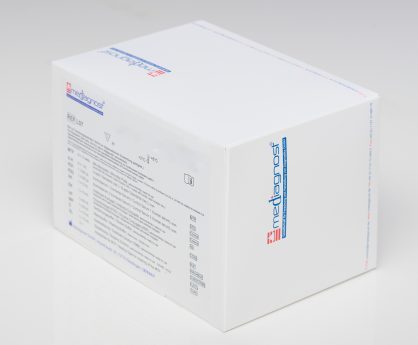Rodent IGF-I ELISA Assay
The Rodent IGF-I ELISA Assay is For Research Use Only
Size: 1×96 wells
Sensitivity: 0.029 ng/ml
Incubation Time: 2 hours
Sample Type: Serum, Plasma
Sample Size: 10 ul
Product is manufactured by Mediagnost
Assay Principle
The Eagle Biosciences ELISA for mouse/rat IGF-I E25 is a so-called Sandwich-Assay. It utilizes two specific and high affinity antibodies for this protein. The IGF-I in the sample binds to the immobilized first antibody on the microtiter plate, the biotinylated and Streptavidin-Peroxidase conjugated second specific anti-IGF-I-Antibody binds in turn to the immobilized IGF-I. In the closing substrate reaction the turn of the colour will be high specific catalysed, quantitatively depending on the IGF-I-level of the samples.
In order to dissociate IGF-I from the IGFBPs, the samples must be diluted in an acidic buffer (Figure 2). The diluted samples are then pipetted into the wells, by this the pH-value will be neutralized. After neutralization of the samples, the excess IGF-II occupies the IGF-binding sites of the binding proteins, thus allowing the measurement of resulting free IGF-I. With this method, the IGFBPs are not removed, but their function and therefore their interference in the assay is neutralized. Due to the extremely low cross-reactivity of the IGF-I antibody with IGF-II, the excess of IGF-II does not disturb the interaction with IGF-I. The test runs like a conventional ELISA using a Streptavidin-Peroxidase-Enzyme Conjugate.
Related Products
IGF-I ELISA Assay Kit
Rodent IGFBP-2 ELISA Assay
Rodent IGFBP-3 ELISA Assay



